Costco Brand Teardown: Seizing A Cultural Moment
Amid rising inflation, tariffs, and uncertainty, shoppers are trading status for smarts, and Costco is right at the center of that shift. Membership renewals are at record highs, Gen Z and Millennials are buying in, and the warehouse is holding its ground against Amazon.
Using insights from 150m credit cards via Personalive Spend, we uncovered:
- 2025’s store opening map has a twist - Costco is doubling down on markets you’d never guess, but the data says they should.
- Gen Z & Millennial sales are up 12% YOY - four brilliant strategies they are crushing competitors like Amazon in YOY growth with younger generations.
- The three demographic headwinds they are about to hit - and from their recent strategic moves - the Costco team sees them coming from a mile away.
- The one critical question they must answer to protect market share - and how Flint Michigan might be the answer.
But with Amazon’s unmatched reach - free from the limits of physical stores - and with Walmart's recent move to capture a wealthier consumer - can the Costco run sustain?
Using insights from PersonaLive’s credit card, mobile device, and social panels I did a full brand teardown of Costco using the Consumer Code⁷ framework.
Read on ->
Costco opened their first store in Seattle in 1983 and has been winning hearts with their subscription model since. They did $249 billion in sales in 2024, with $ 7.4 billion in profit - 4.8b of that coming from membership fees.

{{schedule-demo}}
Case
Costco’s model is simple but powerful: sell only fast-moving bulk items in a warehouse format. With just ~4,000 SKUs (compared to millions at Walmart or Amazon) buyers can purchase at massive scale, negotiate deep discounts, and pass savings along with a strict 14% markup cap.
Its paid membership ($65 standard, $130 Executive) locks in loyalty and funds the model, attracting affluent yet value-driven shoppers. This membership-driven, bulk-only strategy makes Costco unique, resilient in downturns, and a consistent outperformer in the wholesale club category.
Executive Members, who must spend $3,250 to break even, often spend 2–3× more than Gold Star members and drive 73% of Costco’s sales, making Executive growth the core of Costco’s model.
In this inflationary climate, Costco is outpacing other clubs with 2–3% higher YOY growth.
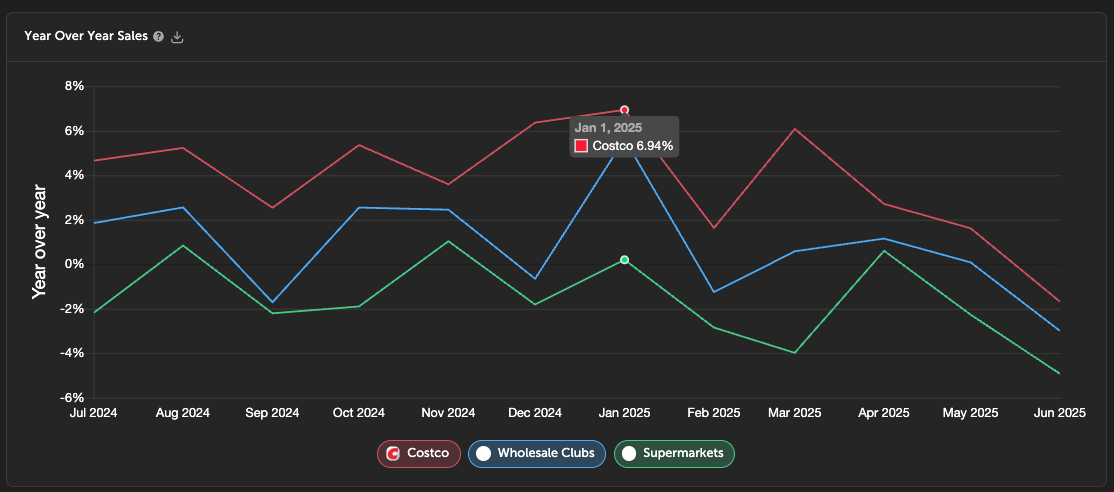
But business models don’t shop - people do. The real test is who Costco attracts, and their customer profile reveals why it is working right now, and where its limits might lie.
Customers
Let’s deep dive into Costco’s customer profile using our panel of 150 million credit cards.
Costco wins with affluent suburban and diverse family segments. Its fastest growth is coming from Millennials and Gen Z.
Age & Generations
Costco is successfully penetrating younger segments, shifting the source of their revenue. Currently Gen X makes up the majority. But Costco already has a higher penetration into Millennials.
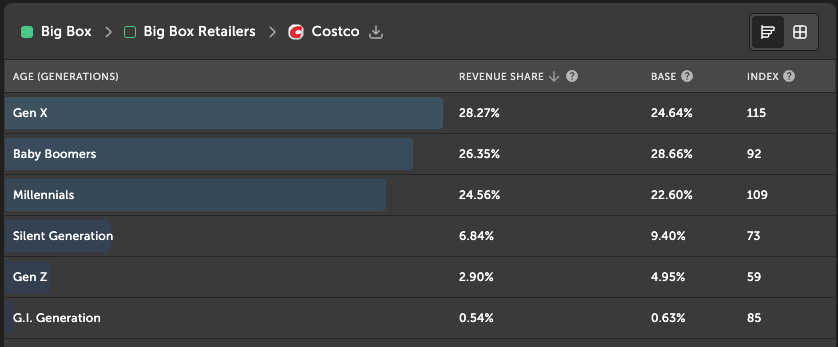

Income Levels
Costco thrives with smart high-income segments. The majority of their revenue comes from households making 100k +, as does their highest levels of household penetration.
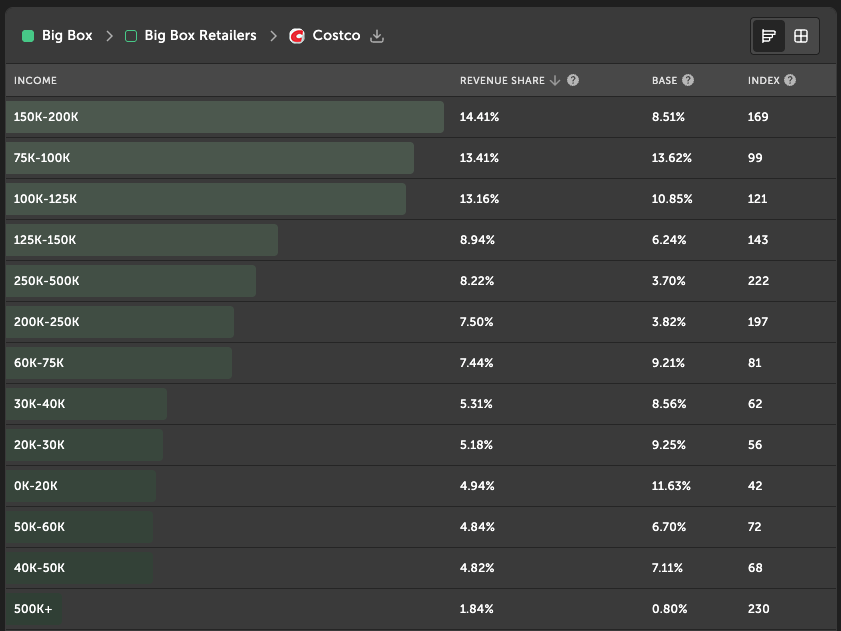
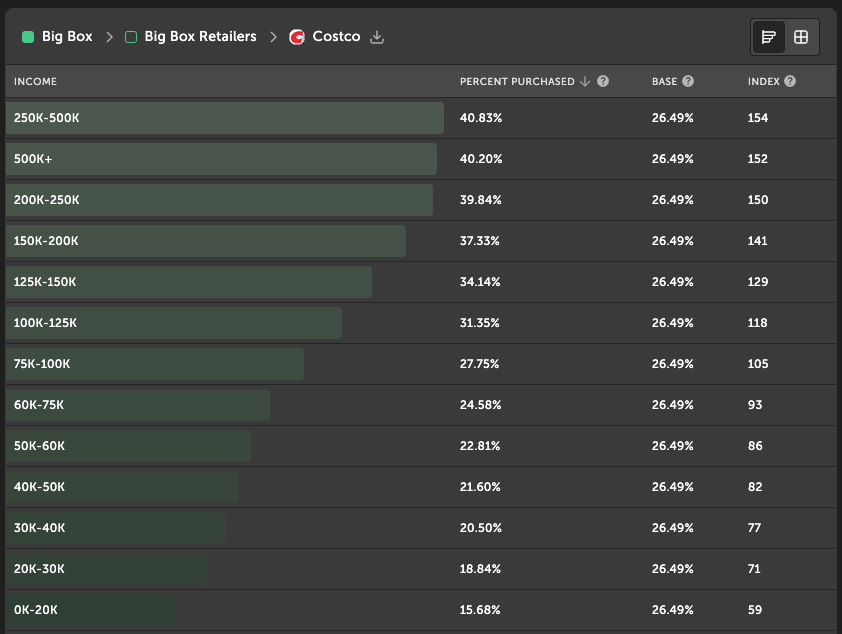
Psychographics
Costco’s core psychographic segments are made up of affluent suburban families. Suburb Chic represents very high-income suburban households. Babies, Burbs & Blessings includes well-off white families with larger households and children. Fusion Families share similar characteristics but are more diverse, over-indexing on Hispanic, Asian, and Black households and growing. Curiously absent are any segments with households making under $75k.
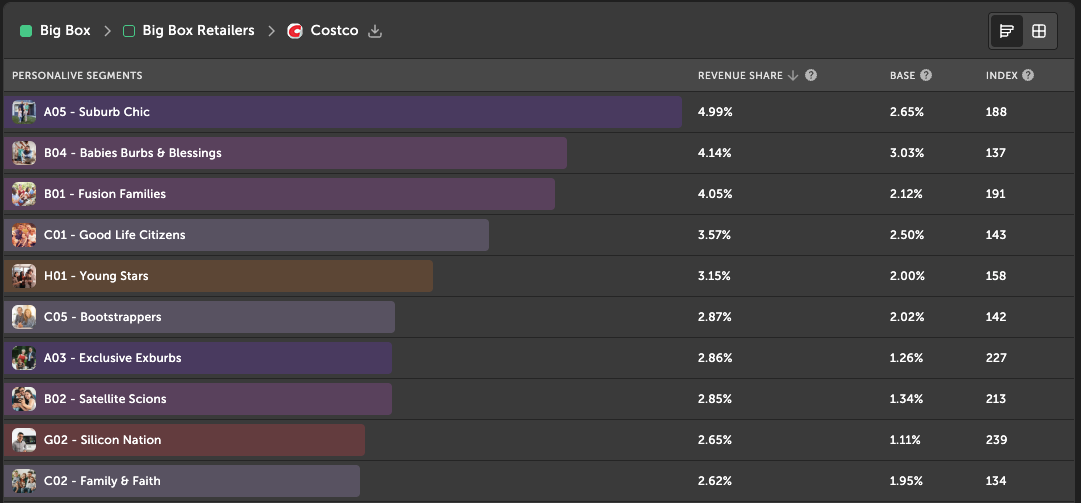
Generational Shift
Analyzing YOY sales they are up as much as 26% YOY with ages 18 - 24, 10% with millennials.
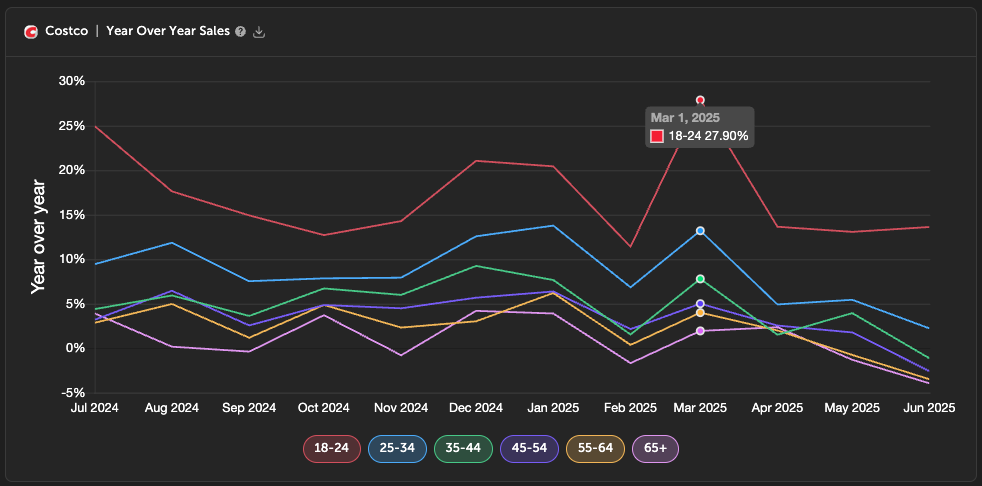
Costco is winning with wealthy, savvy suburban shoppers and gaining ground with younger generations. And every store they open
The next question is, how do these strengths play out against Sam’s Club, Walmart, and Amazon? Comparing customer segments against the competition, we can pinpoint the sweet spot and build strategy around it.
Competition
Costco’s next five years will play out like a high-stakes chess match. The warehouse giant is riding strong economic tailwinds, but its ability to outmaneuver Amazon, Walmart, and Sam’s Club will determine whether it wins the long game.
Cross-shopping data shows the real battleground: affluent suburban households where Costco’s members overlap with its rivals. Paradoxically, competitors often see a lift in sales when a Costco moves in - but the true contest is share of wallet. And here, Costco has been gaining ground, rising from 11.91% to 12.42% market share as Target and Kroger have slipped. Amazon still leads with 35%, Walmart with 32%, and Sam’s Club remains the closest analog.
Let’s look at how Costco stacks up against each.

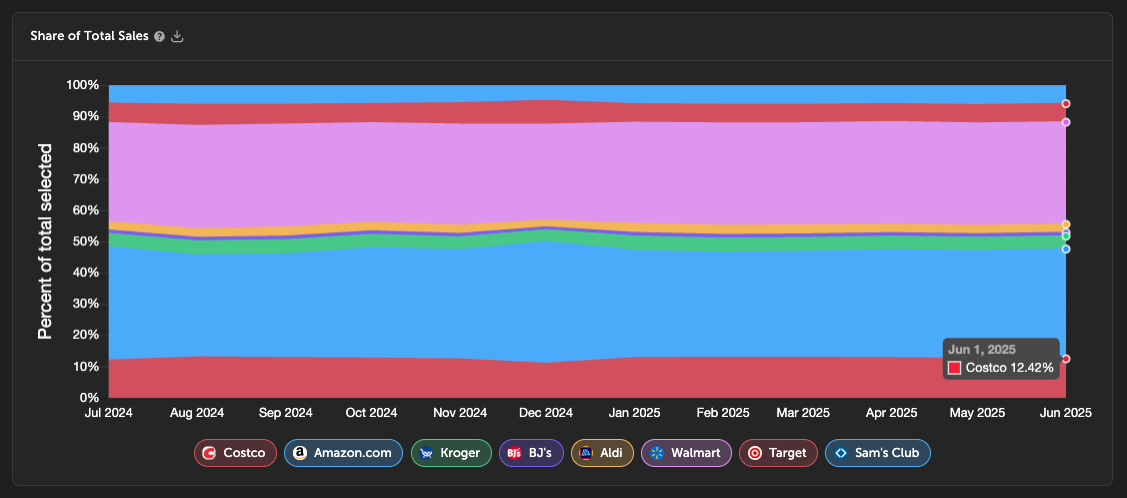
Costco vs. Amazon
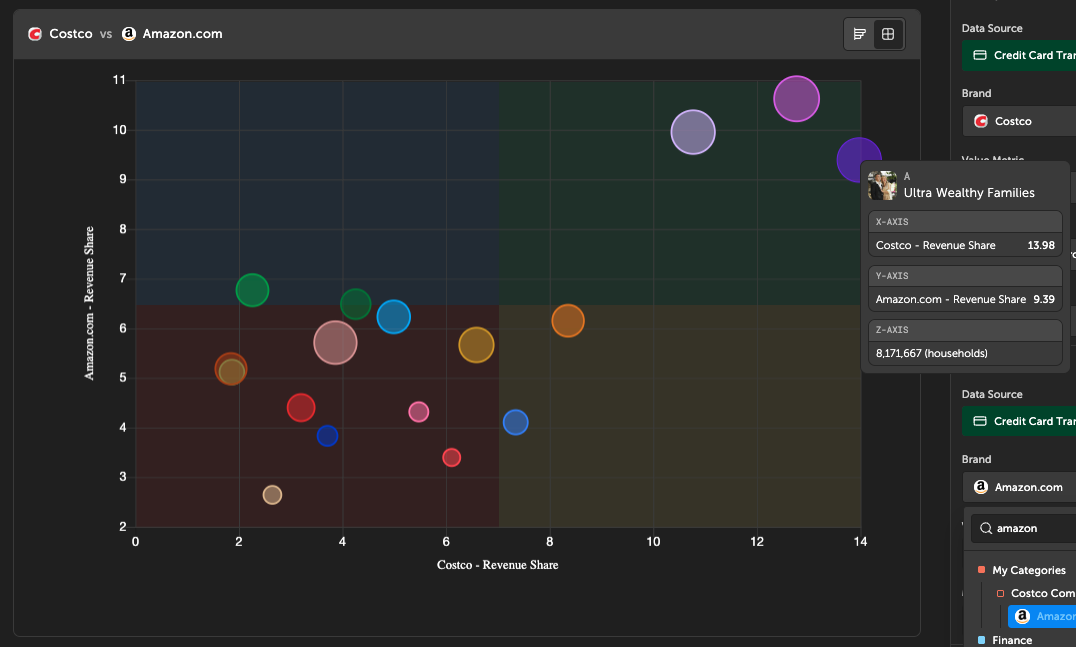
Costco can’t out-Amazon Amazon. But when it builds near its core segments, it consistently wins the bulk basket.
Amazon is Costco’s most formidable competitor, even though their models are radically different. Both brands draw heavily from affluent suburban households, but the overlap ends there: Amazon wins frequency (50 transactions a year vs. Costco’s 14), while Costco wins on ticket size ($103 vs. Amazon’s $39).
Costco needs physical presence to win against Amazon. When they are present they win the gas, grocery, and bulky items battle. To maintain and grow market share against Amazon they’ll need to accelerate store growth, convert more members to Executive members, and lean into their Instacart relationship to ensure they are closing the convenience gap.
They can selectively cede battles on all other fronts but the need to win gas, grocery, and bulky items. And they can’t do that if they can’t reach the customer. So real estate is critical against Amazon.
Costco vs. Walmart
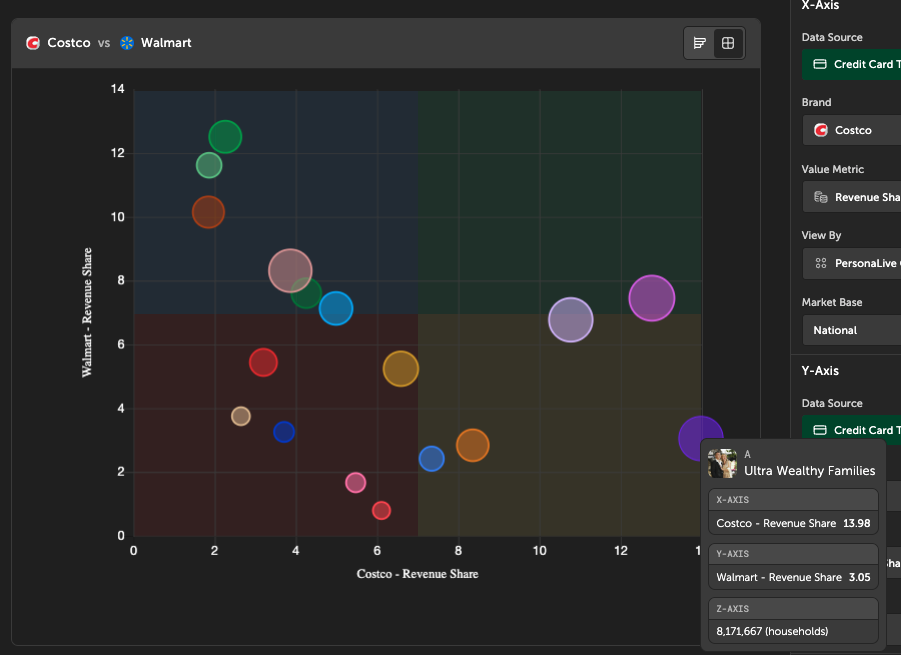
Walmart is chasing the suburbs with variety and convenience, but Costco defends the turf with Kirkland trust, Executive loyalty, and a treasure-hunt culture money can’t buy.
Walmart is known for its rural dominance, but it has recently set its sights squarely on Costco’s turf. Its “Who Knew” campaign - which features actor Walter Goggins revealing he is sitting in a sauna bought from Walmart - is designed to highlight the greater assortment of products.
Given 90% of the US population lives within a ten minute drive of a Walmart - Walmart seems to have discovered in the current value-conscious economic client they can make inroads into the wealthier consumer. And it seems to be working - in Q2 2025 they were up 2.4% on average with segments A, B, C which make up 27% of Costco’s revenue.
Costco can win share against Walmart by doubling down on Executive Memberships. This can be done by creating tailored benefits to the segments near the store - think “Executive for families, Executive for travelers. They can continue winning over Gen Z with it’s treasure-hunt culture and leveraging the trust of the Kirkland brand - which Walmart’ private label lacks.
Costco vs. Sam’s Club
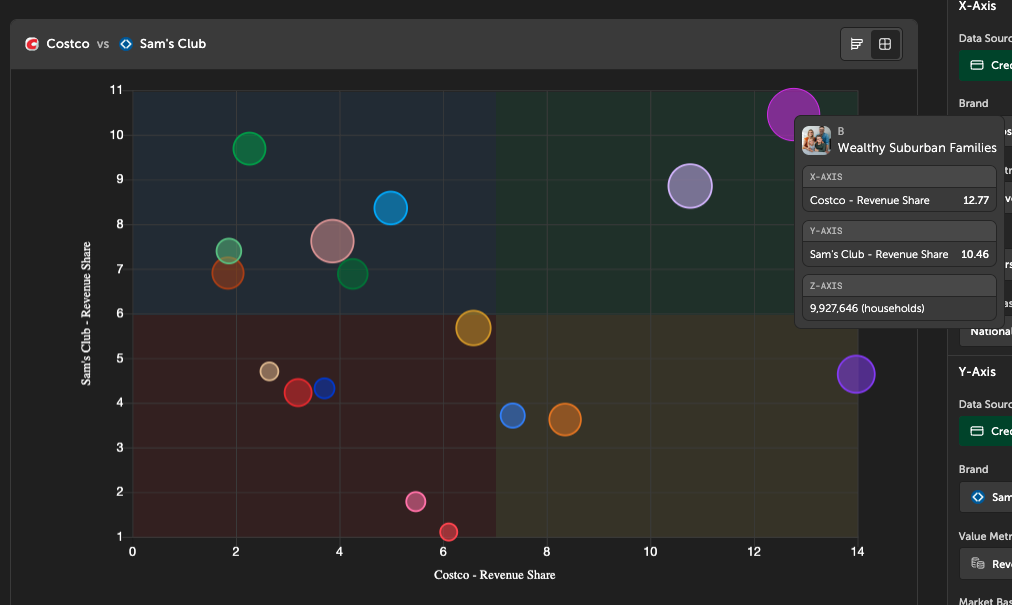
Sam’s Club is the closest analog to Costco, but the gap in performance is striking. Both chains operate around 600 warehouses, yet Costco’s higher-income customer base, tighter SKU model, and stronger loyalty drive nearly double the sales per square foot. Sam’s tends to win in rural and lower-income markets, while Costco dominates with ultra-wealthy families and young professionals.
Luckily Costco’s path to win against Sam’s Club is to focus on their core segments - ignore rural segments, and run the same executive membership and site selection playbook as above.
Competitive Moves
Putting all the above together these seem to be the three power moves against competition.
- Selectively & aggressively increase physical presence: Costco’s edge comes from physical proximity - think gas, bulky items, warehouse finds. Even in a cautious 2025 real estate environment they need to build.
- Level customers up to executive members: Amazon, Sams, and Walmart all have a top tier membership. None of which replicates the level of spend as Costco. Costco needs to pick locations where people are likely to move up to Executive Memberships, and provide personalized benefits to incentivize segments to level up - such as what they are doing with their travel rewards program.
- Selectively close the convenience gap via ecommerce: Amazon will win convenience. But Costco can win convenience with bulky items (TV’s, Grills, etc). To protect grocery, Costco also needs to lean into their relationship with Instacart for food delivery.
The three moves above need to be aligned with the right customer segments. Which means Costco needs to find segments that (1) are profitable + growing (2) have a glide path to executive membership (3) have reason to value bulky items and gas.
Strategic Target Segments
Based on their strengths against competition I recommend Costco take a two pronged strategy - targeting segments most likely to trade up to Executive Membership (based on their avg spend per year) and suburban segments that make up a high portion of their revenue relative to the population base (ie: segments they have proved themself with and still have room to grow as it relates to their total penetration).
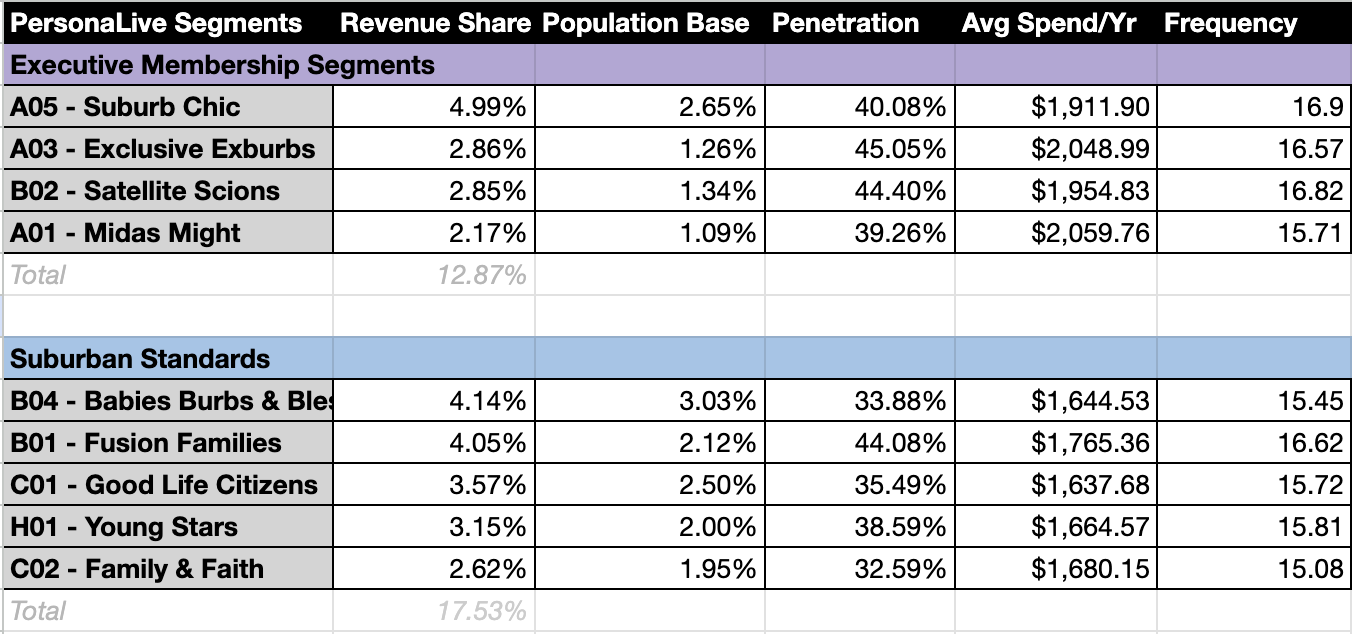
This focused group of segments makes up 30% of their revenue share and a fully targetable population of 61 million. Yes, they will continue to sell other segments but these have the biggest bang for the buck.
In the next section we will analyze Costco’s most recent 11 openings. It’s clear the company is pursuing the same playbook we outlined in competition: anchoring its strengths in affluent, high-value segments. What stands out, however, are two bold experiments I wouldn’t have expected. And given the demographic shifts that will play out over the next decade, they make perfect sense.
Channels
Retail brands have three basic levers for growth: open more stores, acquire new customers, or sell more to existing ones. For Costco, two of those levers matter most—expanding its footprint and upgrading members into Executive Memberships. Unlike Amazon, Costco can’t sell where it isn’t physically present. And unlike most retailers in 2025, it has the durability to expand with confidence: Costco hasn’t closed a mainline store in 25 years.
This makes Costco a rare exception in a cautious retail climate. Store expansion isn’t just part of the playbook, it is the playbook.
Store Expansion
Analyzing Costco’s 11 most recent openings reveals a clear pattern: the company isn’t chasing megacities. It’s filling the edges of existing markets, planting flags in smaller but fast-growing towns, and targeting segments with high lifetime value. The playbook can be boiled down to four moves.

Our recommended target segments highlighted in green.
Move #1: Diverse Suburbs
Costco is leaning into immigrant-driven, high-income households, segments like Fusion Families and City Sabor. These shoppers are affluent yet value-conscious. Perfect fit.
Example: Brentwood, CA; Highland & Allen, TX
These locations are anchored by diverse, high-spending households. In Brentwood, 74% of the surrounding population falls into Costco’s target segments, with Hispanic and Asian families leading the charge.
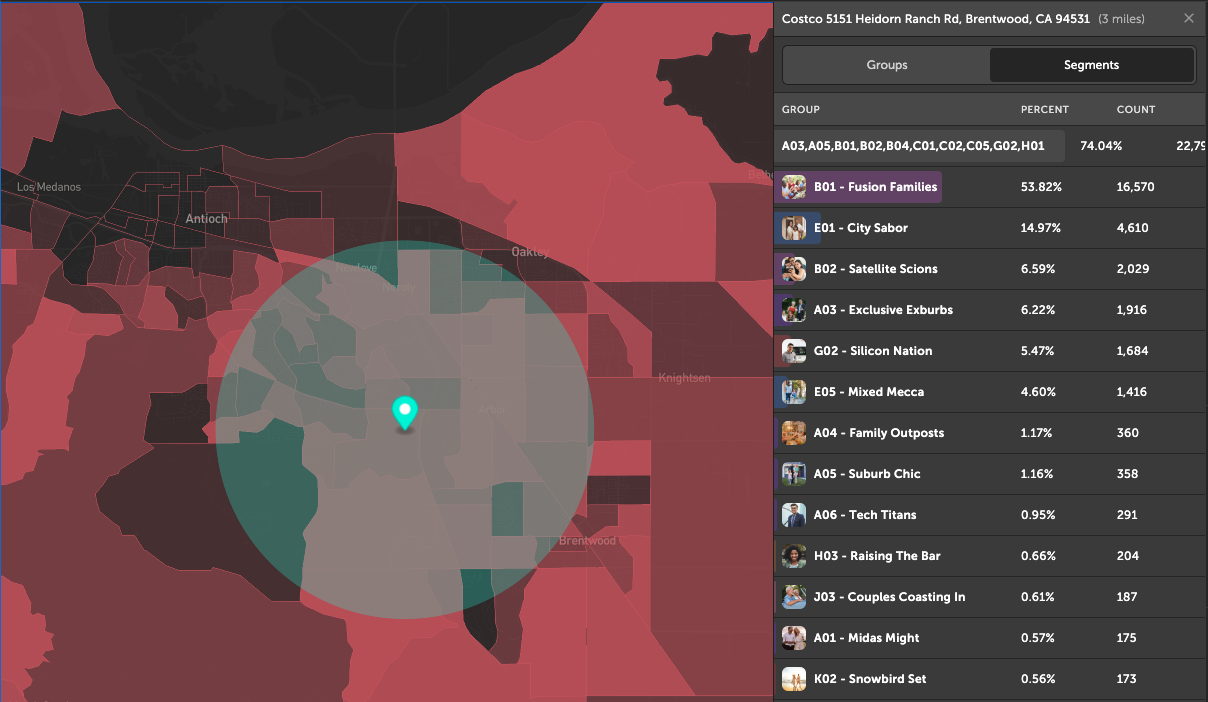
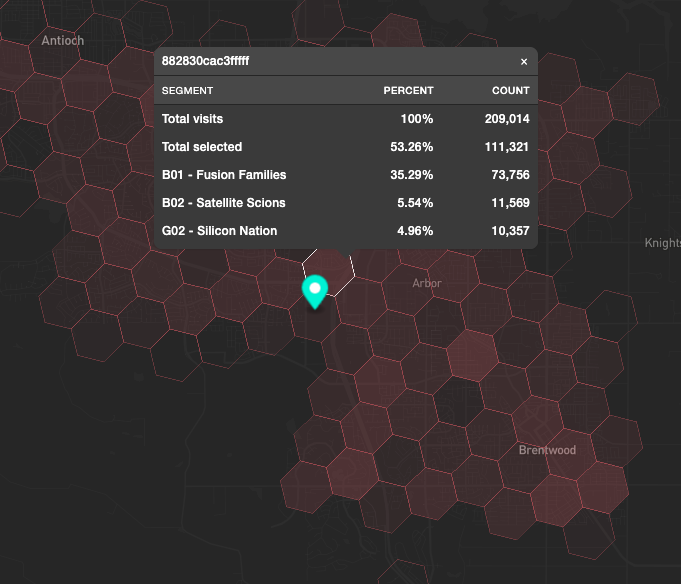
Move 2: Growing Family Towns Adjacent To Stronghold Markets
Costco is also targeting smaller towns with outsize growth potential, especially those with high fertility and suburban migration. Such as Weatherford & Richland, TX. These markets are dominated by “Babies, Burbs & Blessings” households—wealthier suburban families who have children at rates 60% higher than the national average. Small now, but positioned for rapid growth, they sit adjacent to Costco’s already-successful Texas strongholds.
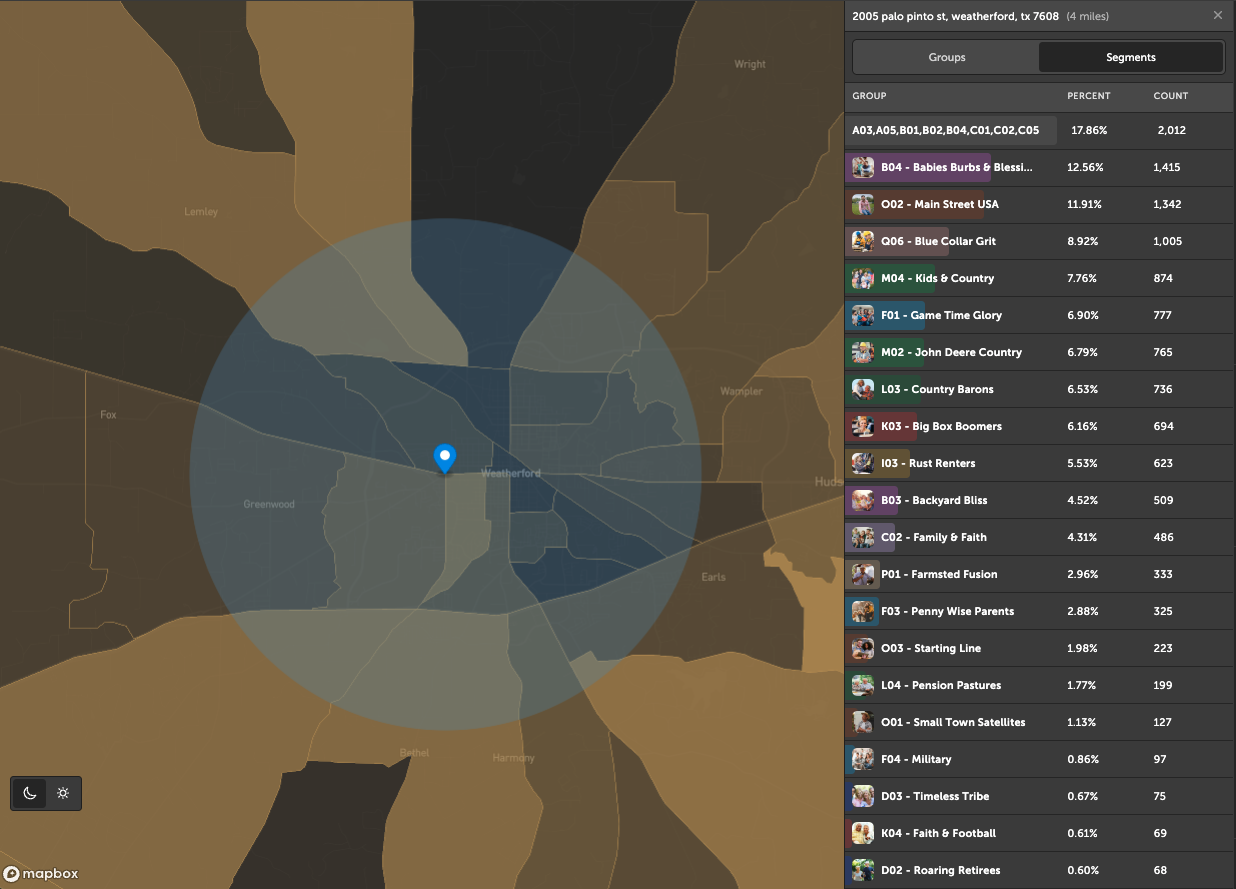
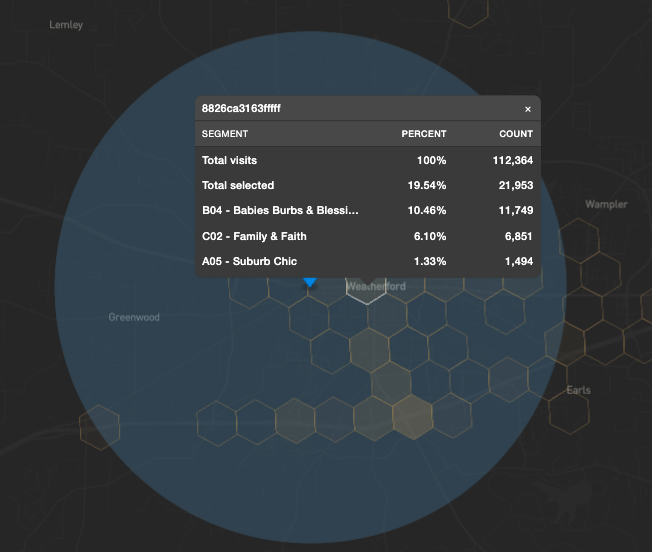
Move 3. Young Professional Markets
Costco is testing markets with strong young professional bases, sometimes at the leading edge of gentrification. These areas have high incomes Gen Z and Millennials with long-term loyalty potential. Such as Sharon, MA & Spring Valley, NV - Sharon draws in high-income young professionals, while Spring Valley blends Fusion Families with tech-savvy singles in segments like “Silicon Nation.” The combination makes these markets fertile ground for Costco’s next generation of members.
Spring Valley Nevada
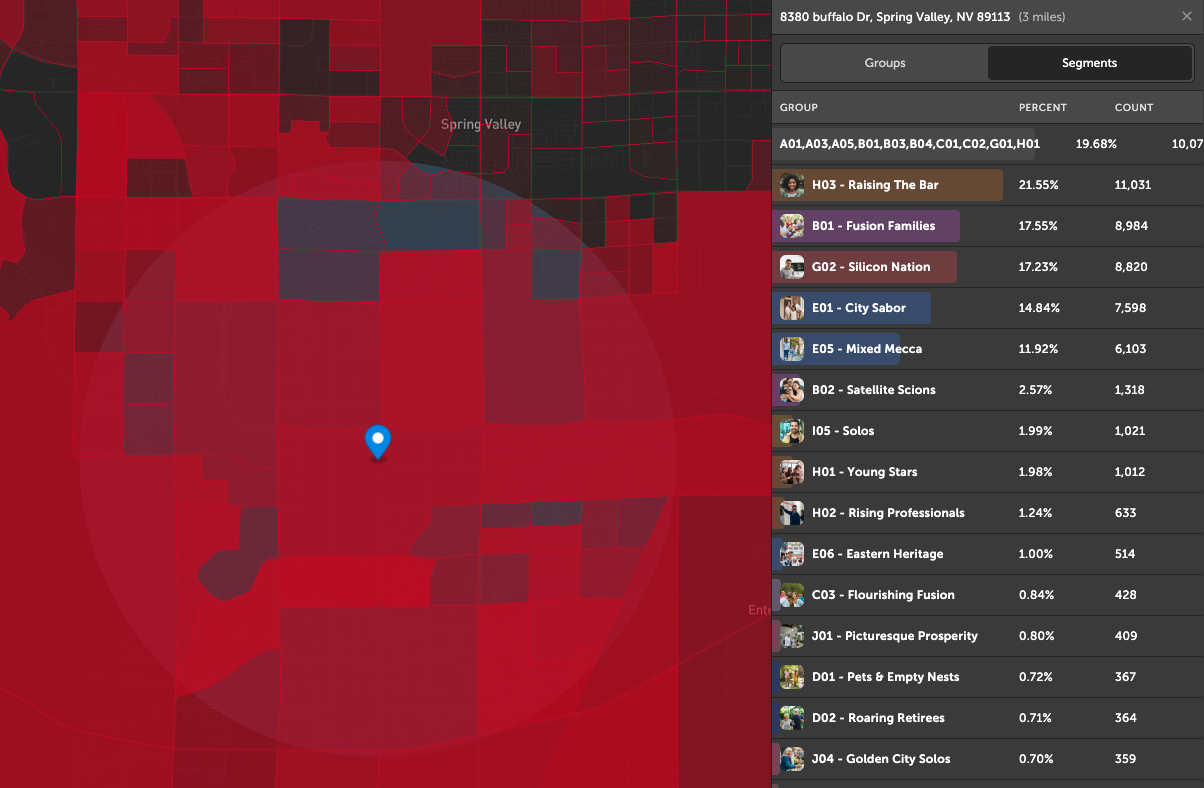

Move 4: Boomer Growth Markets
Finally, Costco is making plays in snowbird-heavy markets, areas where retirees are moving in at double-digit rates, even if long-term demand may soften.
Example: Stuart, FL & The Villages, FL
These markets are growing at 15–17% annually, driven by migrating boomers. They may hollow out in two decades, but in the near term they offer Costco strong, high-ticket membership potential.

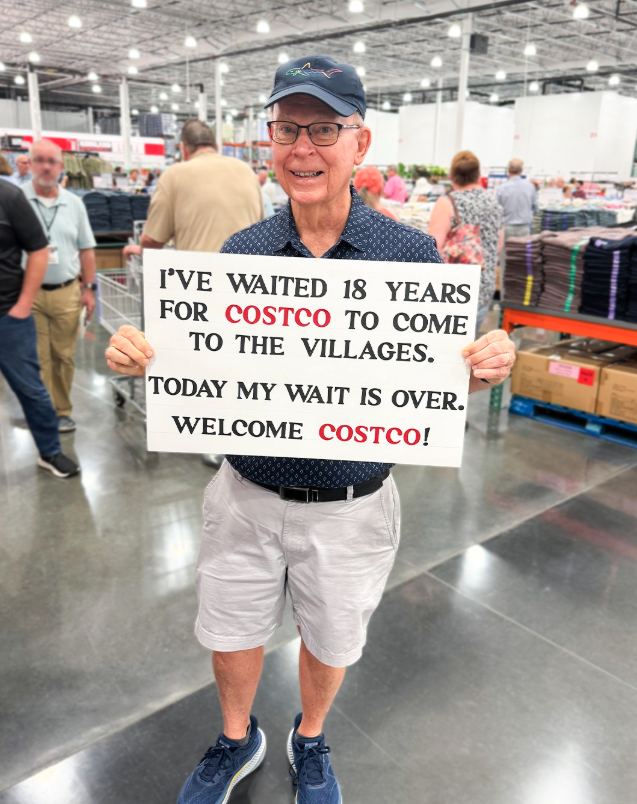
Move 5: The Flint Test - Below $75k Households
One puzzling move is Costco’s new store in Flint, Michigan. Unlike other openings, Flint is a lower-income, smaller market, not adjacent to a major Costco cluster, and has exactly zero of Costco’s target segments. On one hand we could call this a misfire by the site selection team. I don’t think it is.
I believe Flint Michigan offers the answer to one of the most critical questions to the limits of Costco’s growth. Which is - can this model work in communities where households make under $75k. If it does, it unlocks enormous geographic options for them.
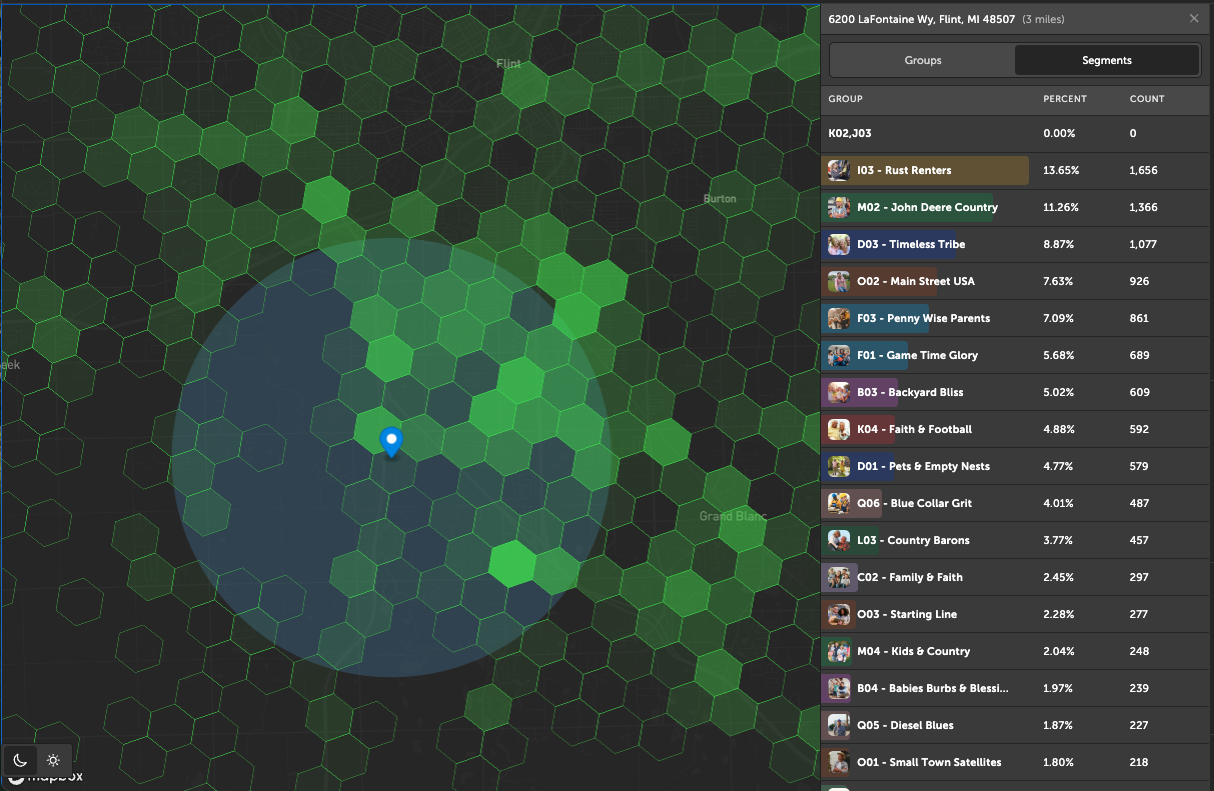
Given the importance of brick and mortar to Costco’s model - we have to see each store as a demographic bet on the future. And if their past 11 store openings are evidence they are paying close attention to both the economic climate they are in and the demographic headwinds coming down the pipe.
Climate
Climate captures the current and future economic climate the store is operating in. It can’t fix bad strategies but can act as an accelerant (tailwind) or a dampen (headwind) growth.
In 2025, Costco is in a great place to seize the moment. People are fed up with inflation and they are making waves in Gen Z and Millennial generations. But they need to establish a foothold now when the harvest is ripe because demographic tailwinds are coming.
Tailwinds: Why Now Is Working For Costco
↳ Inflation is fueling Costco’s growth: In 2025 the general sentiment of consumers has shifted towards value. This bodes well for Costco as they have hit records in both memberships and renewals.
↳ Frugality is trendy now: Millennials and Gen Z proudly hunt for deals, turning Costco trips into a post worthy social activity widening warehouse club’s appeal across income levels.
↳ Private label pride + treasure hunt thrills: Kirkland’s reputation for quality at a bargain drives loyalty, while Costco’s ever‑changing “treasure hunt” experience turns shopping into an event, especially for Millennials and Gen Z.
↳ Bulk buying is back: Gen Z and Millenials have both grown up pressed with college debt and economic ups and downs. This is probably why both of these generations see Costco as a money saving life hack.
Headwinds: The Risks To Sustaining The Costco Run
↳ Big-ticket spending is softening: inflation pushes shoppers to Costco for essentials, but dampens demand for big-ticket items like TVs and furniture as households defer optional purchases - the exact place Costco has an advantage over Amazon.
↳ Gen Z is driving less: with only 54% valuing car ownership, younger urban shoppers face access and storage barriers to Costco’s suburban, bulk‑buy model, challenging its reach with future generations.
↳ Households are shrinking: the average U.S. household has dropped from 2.8 people in 1980 to 2.6 today, fertility has dropped from 1.8 to 1.6 births per woman in the same time, meaning fewer large families to consume the bulk volumes that power Costco’s model.
↳ America is aging: As Boomers move into their 70s and 80s, mobility and spending decline, posing a headwind for Costco’s bulk‑buy model and requiring younger generations to fill the gap.
These forces explain why Costco is winning right now. But also why the next decade will require adaptation. Inflation drives members in, but shrinking households and an aging population will test Costco’s bulk model. By planting flags in towns with high pop growth, appealing to Gen Z consumers, and testing a lower income and car bound demographic Costco is strengthening their position for the coming decade.
Creative & Copy
Costco’s Media Strategy: Loyalty Over Loudspeakers
Costco is a paradox in the world of marketing: A billion dollar powerhouse that spends next to nothing on advertising. Yet my audit of hundreds of ads and social posts reveals Costco is far more strategic than it seems.
1.Owning The Relationship
Costco knows the biggest honeypot is its own members. They rely on direct channels like personalized emails and targeted promotions to deepen loyalty. You can see the results of this approach play out in real time by looking at their member frequency (14.45) vs. Sam’s Club (11.46).
Costco’s flagship media channel is the Costco Connection magazine, the third-largest in the U.S. by circulation. It reads more like a magazine than a coupon book. 90% of readers trust it, making it feel like a benefit of membership rather than marketing.
2.Strategic Alignment Over Mass Reach
When Costco does step into advertising, it does so in a value-add way. Its travel rewards program is a case in point. Through both its Citi Visa partnership and Costco Travel platform, members can earn rewards on trips and bookings. The media push here isn’t random; it’s tightly aligned with Costco’s largest, most valuable customer segments: those who spend heavily on travel.
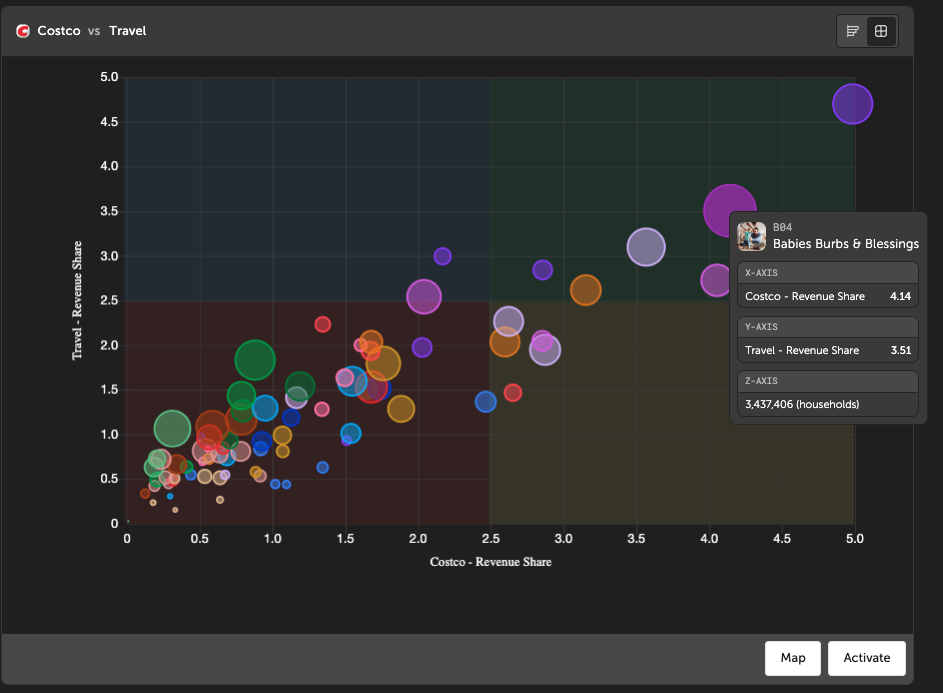
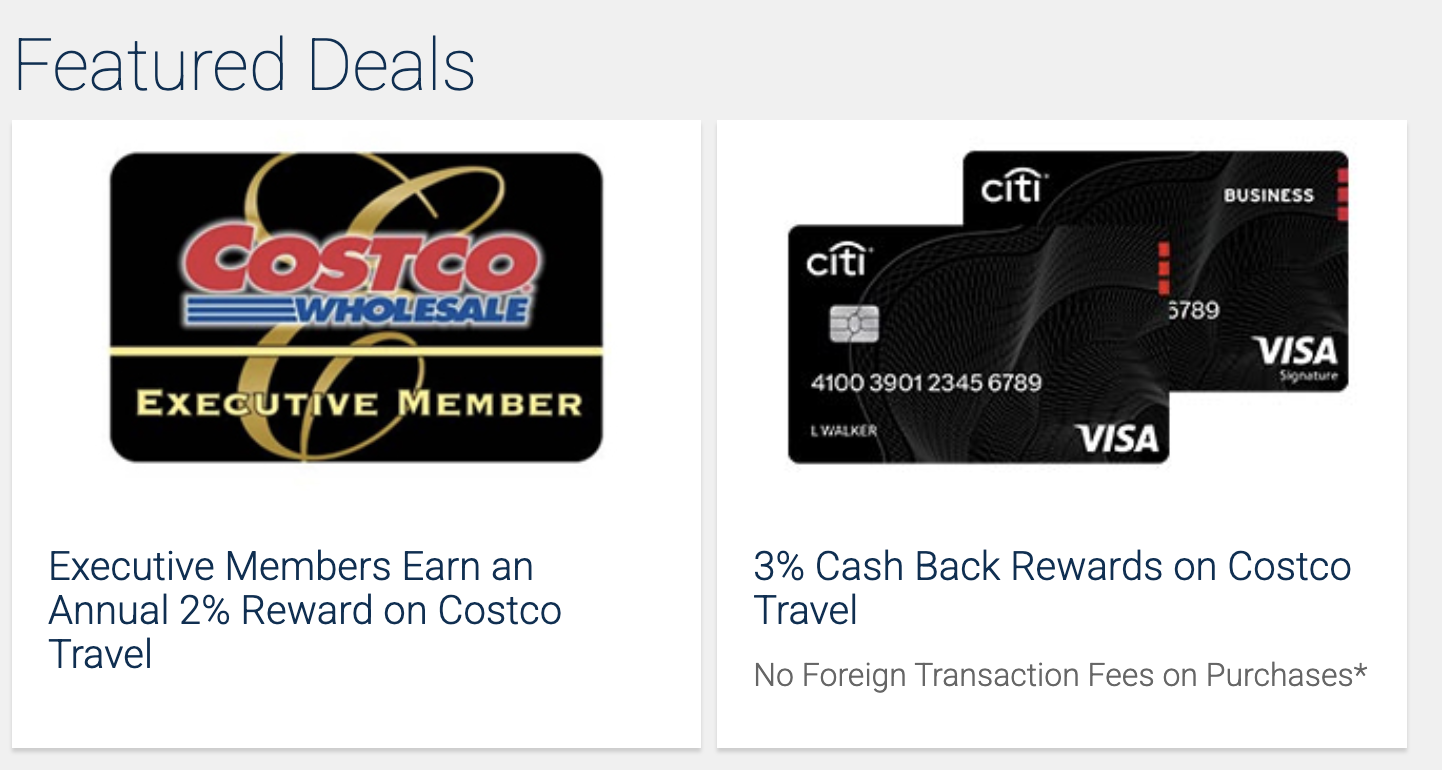
3.Social Media Is Its Cultural Stage
This is where Costco shines. And nearly the ENTIRE reason they have seen such a lift in Gen Z sales. I spent a long time on their instagram account - here are the four brilliant strategies they are using to beat Amazon YOY growth in this segment.
Segmenting in Real Time: Instead of generic personas, Costco’s feeds reflect its diverse segments directly. One post might feature a Gen Z executive member splitting a membership with roommates, while another showcases a young family’s toddler toddling through the aisles.
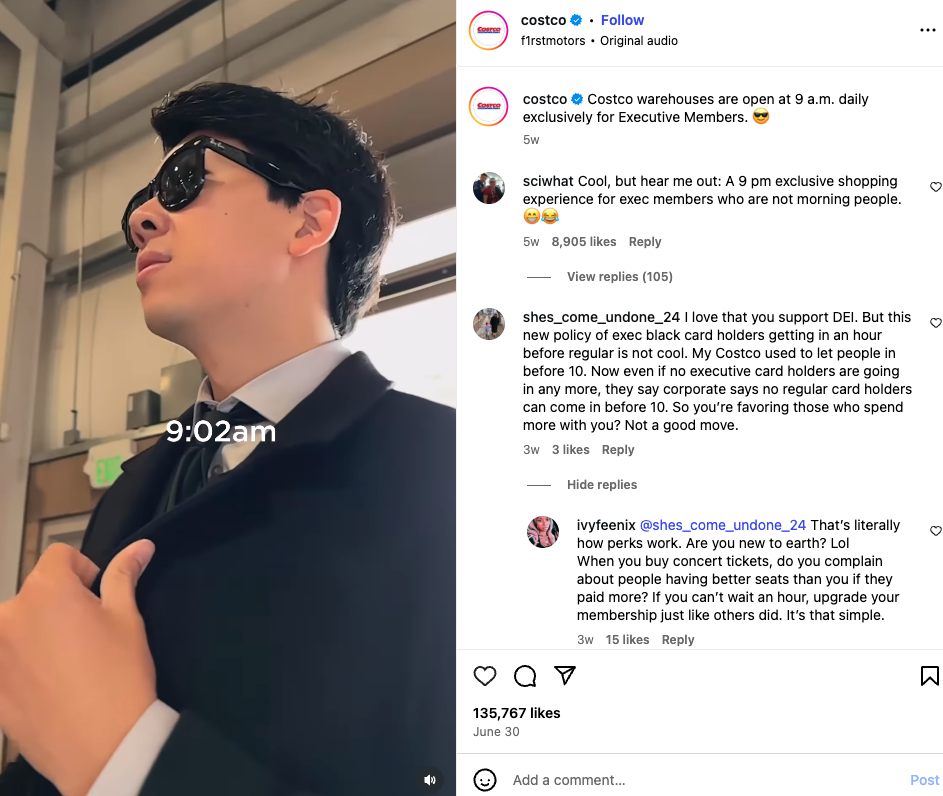
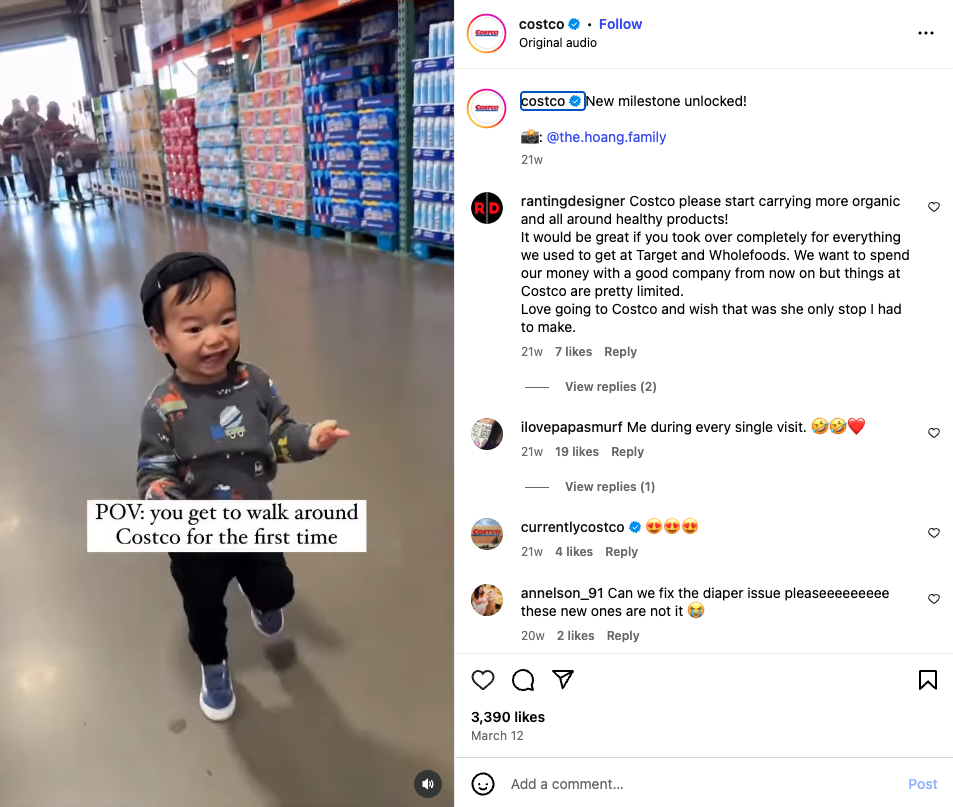
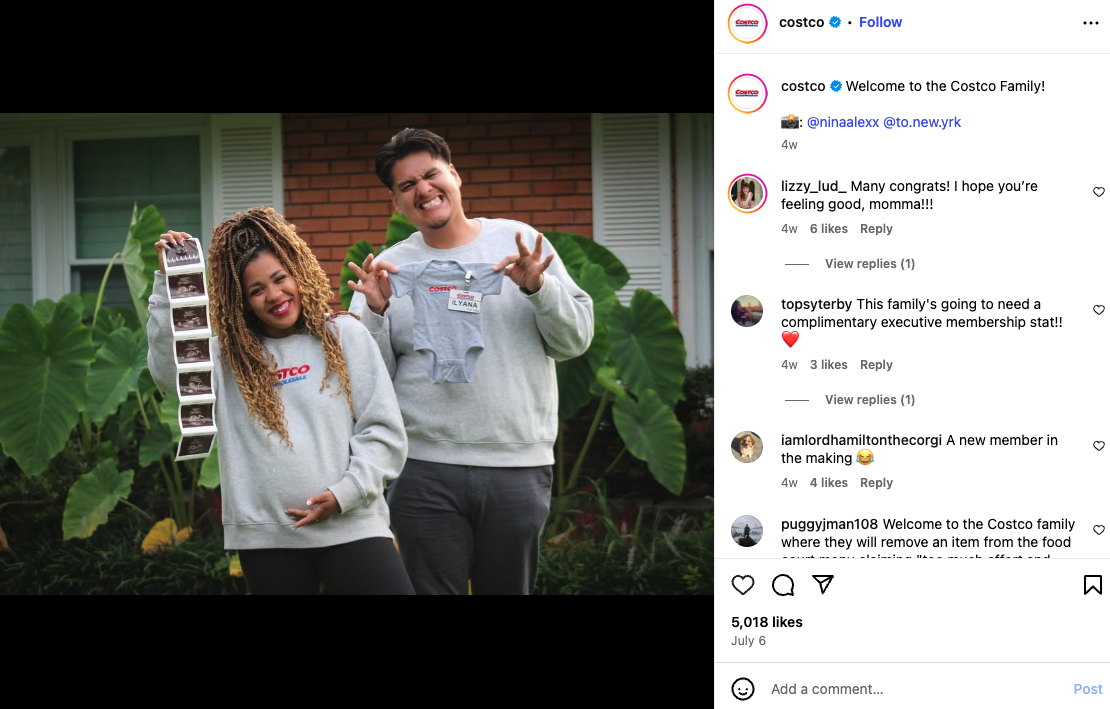
Stealing Content From Customers: Costco’s team pays close attention to member-generated content, memes about rotisserie chicken, viral “Costco date” stories, or treasure hunt finds. These posts often get amplified or remixed by Costco itself, creating a virtuous cycle of engagement.
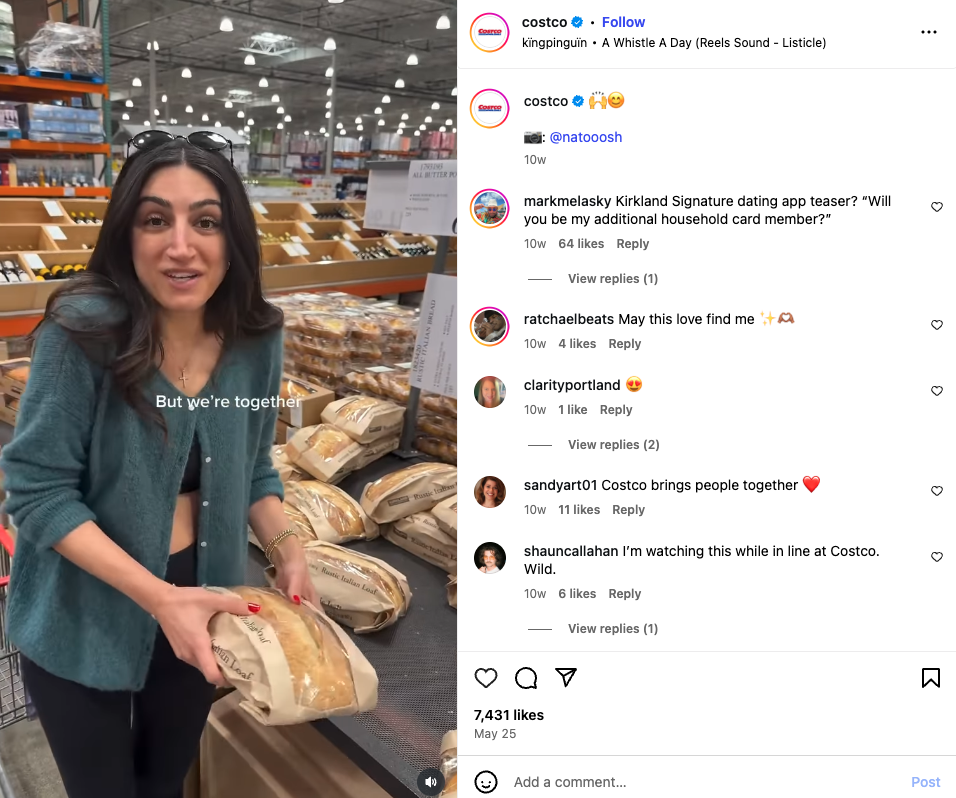
Self-Aware Humor: Costco doesn’t shy away from its quirks. From the legendary $1.50 hot dog to Kirkland-brand sweatpants, the brand embraces self-parody. Posts like the viral hot dog meme during inflation aren’t just funny, they strike a chord by reinforcing Costco’s value promise in ways competitors can’t match.
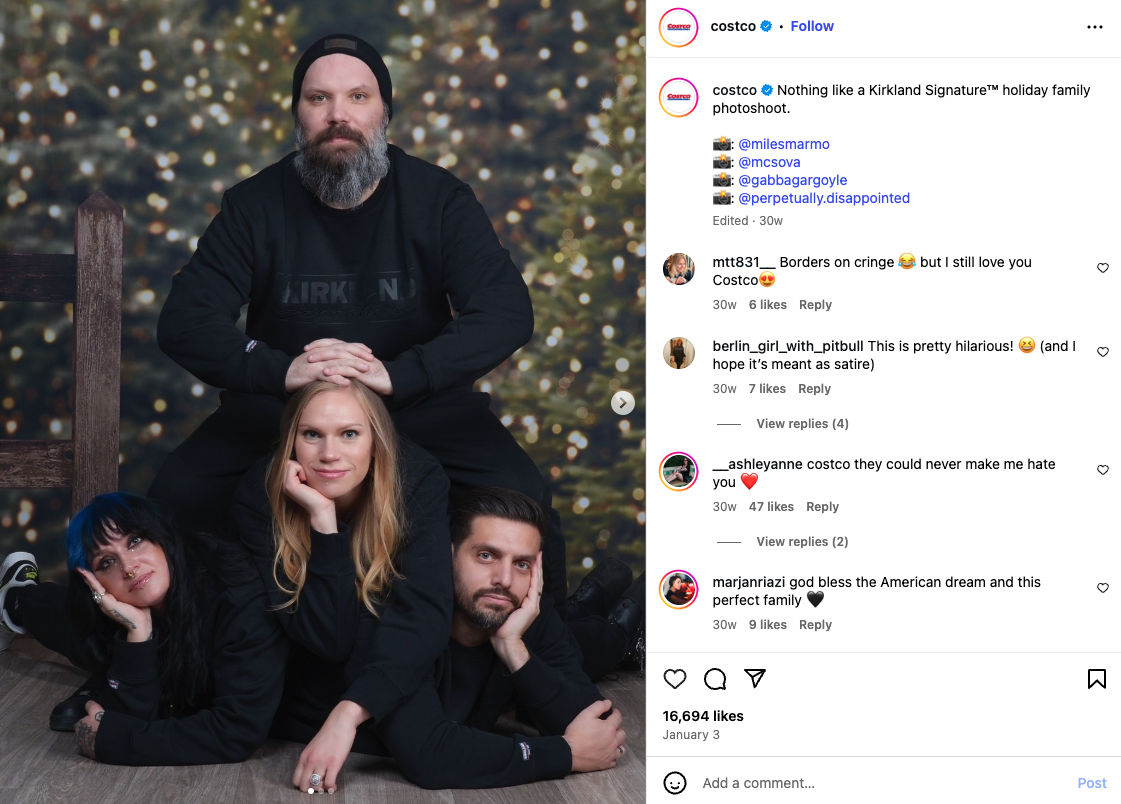

Encouraging the behavior they want: Costco knows Gen Z hacks the system by pooling their money and splitting an executive membership. And they have recently cracked down on this happening. But in this post they are turning that around by framing adding a roommate to your membership as a friendship milestone.

The Payoff
Costco is somehow able to encourage influencers (they actually have a modest $3 bounty for membership sign ups) without it feeling forced. In doing so they are striking a chord with Gen Z not by ad spend, but by resonance.
Conversion
Conversion measures whether strategy achieves its intended outcome—whether that’s lowering customer acquisition costs, winning share among target demographics, or driving upgrades to Executive Memberships. By that measure, Costco’s playbook is working.
Costco’s growth is steady and resilient, avoiding the volatility of Amazon’s trajectory while steadily climbing upward. The biggest momentum comes from younger shoppers—Gen Z sales surged 25% year-over-year, with Millennials up 10%—signaling a durable backbone for decades ahead. I attribute this to smart site selection & good social media game.
Growth spans income brackets, but the $250k–$500k households stand out as high-volume spenders primed for Executive Membership upgrades. By segment, Costco is gaining fastest among Young Professionals and Near-Urban Diverse Families, exactly the demographics targeted by its recent store expansion strategy.
The jab, jab, hook of pushing into young generations, expanding at market edges with growing populations, and riding economic tailwinds is working.
Conclusion & Strategic Recommendations
After such a deep dive on Costco, I am genuinely astounded by how astute their entire machine is. From their business model, to their social media, even their major strategic decisions - fuel, executive benefits like travel, selective ecommerce - all line up perfectly with both our current climate and upcoming demographic trends. So my recommendation for Costco will be more about holding their ground and placing little experiments for growth.
#1 Level Up To Executive Membership Through Personalized Benefits Bundling
Executive members spend 2.5x than gold star members, and as Costco grows into new markets, they’ll need to find personalized ways to convert those members. They can do this with benefits bundling like they have already done with travel. Consider this: Customer segments visiting The Villages location spend 55% more on pets and 80% more on pet insurance, Flint’s blue-collar shoppers spend 36% more on gas, and Brentwood’s diverse affluent families spend 80% more on laundry and 60% more on education. By grouping stores into demand themes they can create a unified and personalized way to move the executive membership needle.
#2 The Flint Test: Unlocking Costco’s Growth Map
At some point Costco will saturate the markets with their target customers. This is why you see them planting flags in blue collar and boomer towns to test what their model can do. I would encourage Costco to see this as HOW to make their model work there, not IF. Crack the code in markets like Flint, Michigan, and Costco unlocks an additional 25% of the map that has historically been out of reach. And that physical presence is key in holding and growing market share against Amazon, Walmart, and Sams Club.
#3 Strategically Close The Convenience Gap For Gen Z & Millennials - Cede The Rest
Amazon might own convenience, but Costco doesn’t need to fight every battle. The focus should be on the generations that matter most for the next 20 years: Gen Z and Millennials. These younger cohorts value grocery delivery and bulky-item convenience. By leaning into Instacart for food and creating a frictionless e-commerce path for large items like TVs, grills, and furniture, Costco can neutralize Amazon’s edge where it matters most. And focus on getting them into the store where the gas, treasure hunt culture, and $1.50 hot dog magic happens.
After dissecting every 2025 Costco store opening, every social post, and wallet share across a panel of 150M credit cards, I came to one conclusion: Costco’s 2025 strategy is next-level. Every weird move they’ve made makes total sense in context of the overall climate.
What you should do now
Whenever you're ready, here are 3 ways Spatial.ai can help:
- See PersonaLive In Action. If you'd like to segment and target your best customers using real-time behavioral data, schedule a free 30-min demo to get started.
- Subscribe To Consumer Code. If you've found this helpful, check out our newsletter and podcast where we share more consumer research and insights for retail marketers.
- Share This Post. If you know another marketer who’d enjoy reading this post, share it with them on Linkedin, X, or Facebook.
Get retail marketing tips
We email every monday with smart growth strategy ideas. Almost no promotion. Just value.
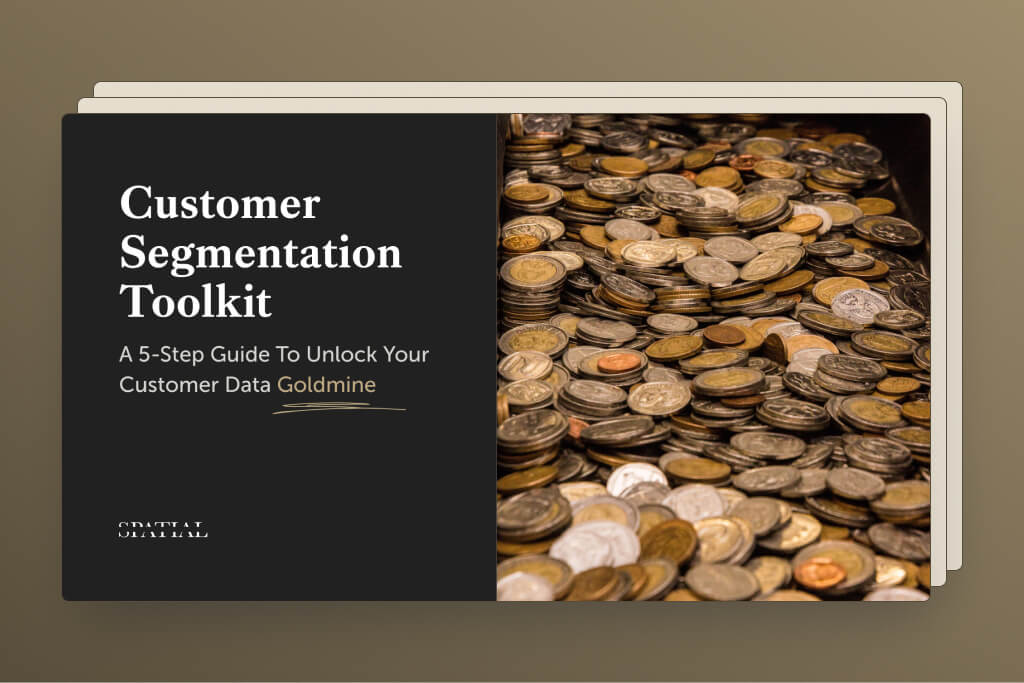
.avif)
%20(1).jpg)

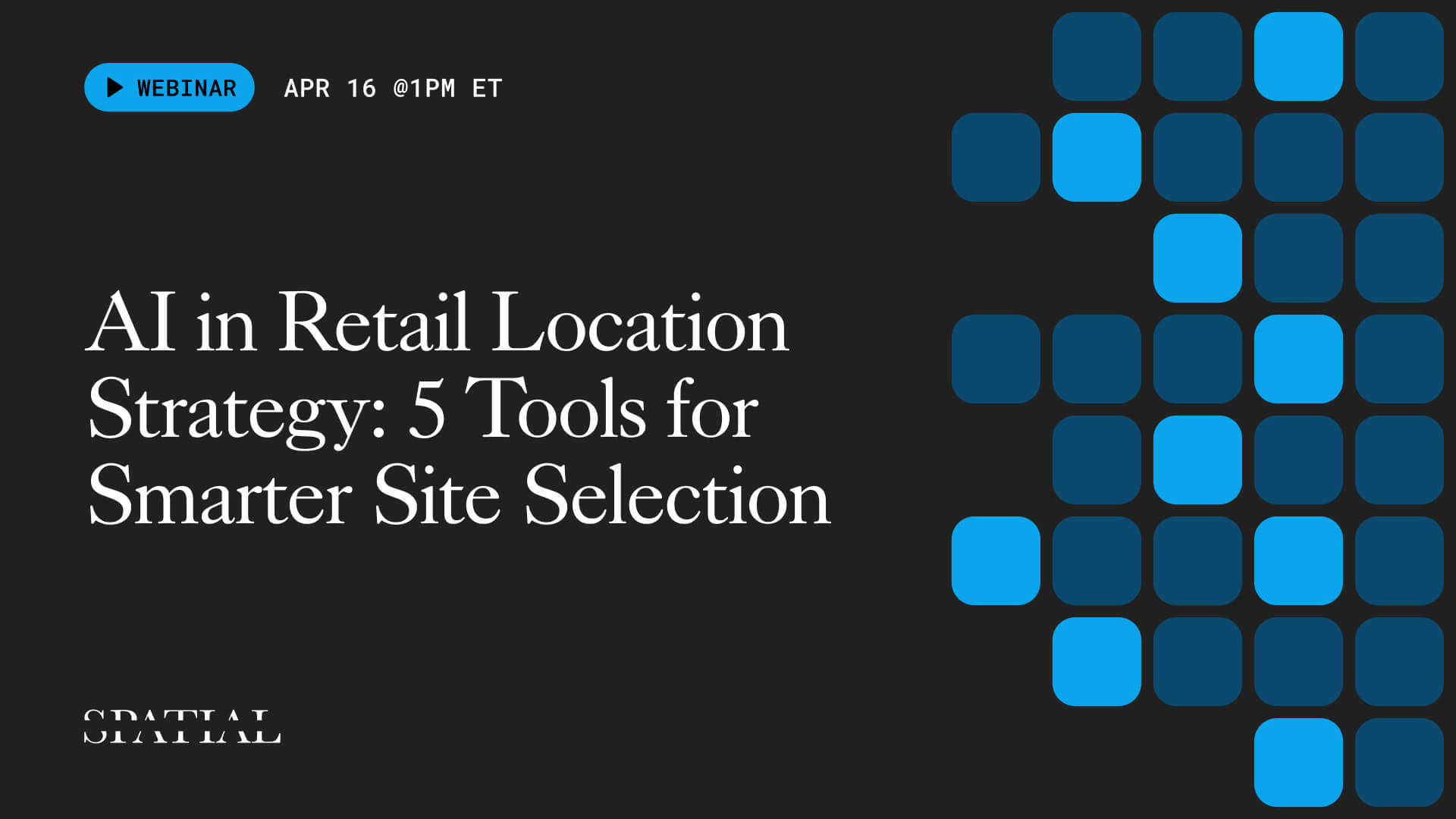
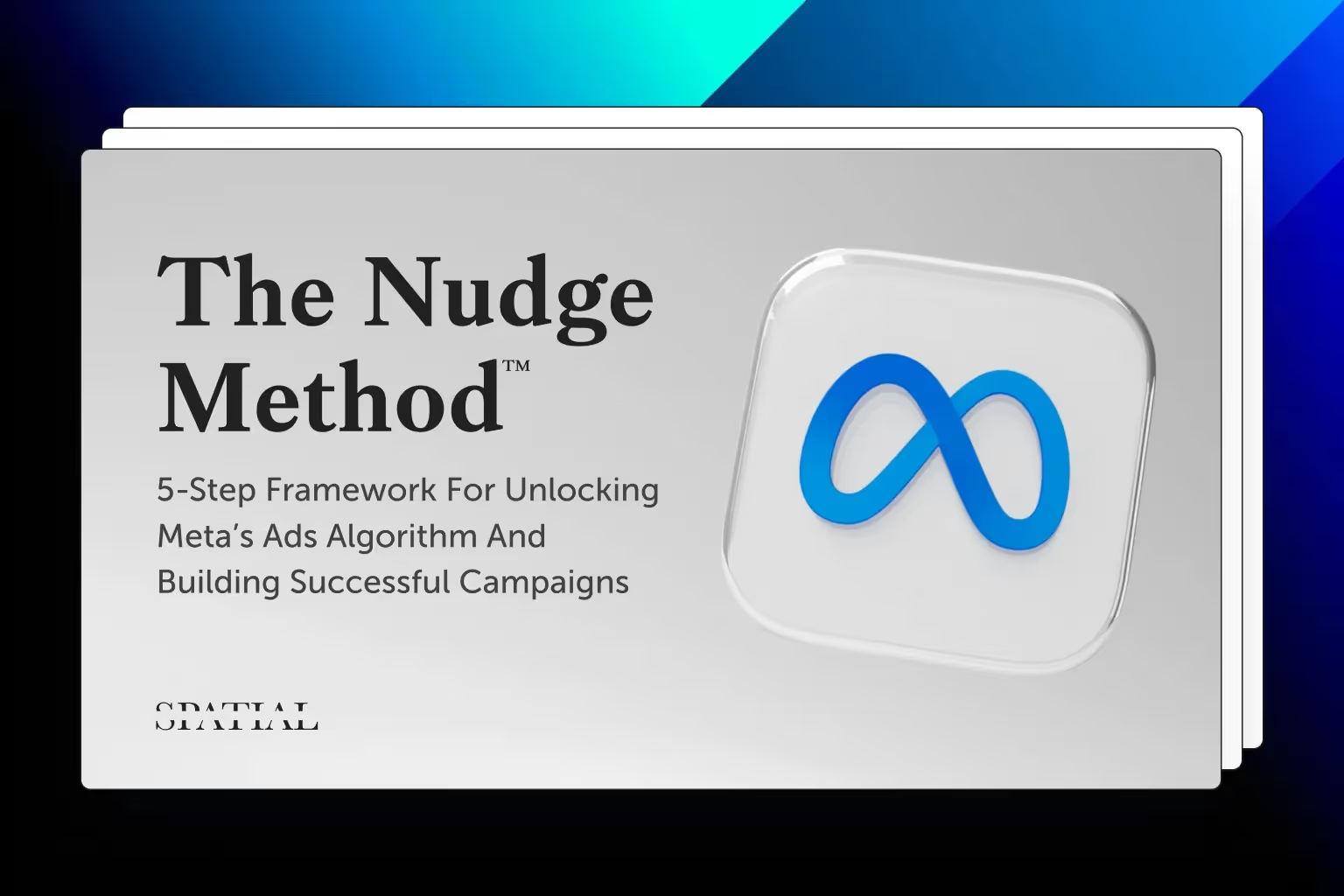
Looking for similar insights for you brand? Schedule a free 30-minute demo.




%20(1).jpg)